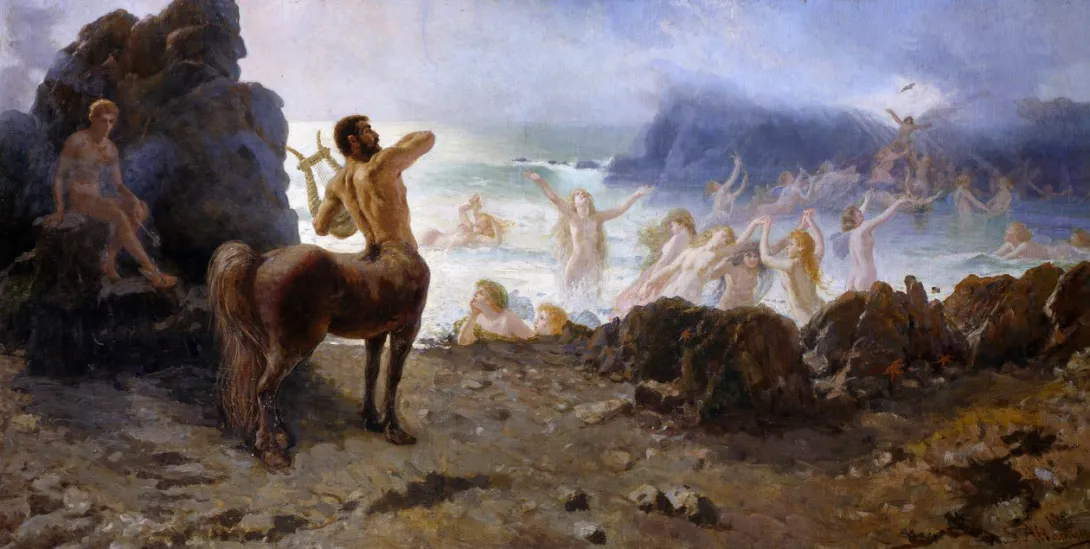Saverio Altamura, an Italian Romantic painter from Bari, was a key figure in Risorgimento art, blending historical themes with revolutionary fervor. Trained in Naples, he exiled to Greece and France after 1848 uprisings, influenced by Pre-Raphaelites via his wife, Jane Benham Hay. His style fused dynamic Romanticism with realism, emphasizing emotional depth and national allegory.
Created in 1889, this oil on canvas (exact size unknown, likely monumental) resides in Rome’s Galleria Nazionale d’Arte Moderna e Contemporanea. It depicts Chiron—the wise, immortal centaur and mentor to heroes like Achilles—singing in ecstasy about freeing Prometheus from his torment. In myth, Chiron, wounded by Hercules’ poisoned arrow, trades his immortality for Prometheus’s release, symbolizing sacrifice for liberty.
Description
Chiron dominates the asymmetrical composition in a rocky Pelion landscape, evoking ancient ruins and twilight hues (oranges, reds) that heighten passion against cool shadows. His muscular human torso and equine body convey duality—human spirit vs. beastly form—arms raised in hymn-like gesture. No secondary figures; focus on solitary heroism, with meticulous anatomy and Pompeiian-inspired intimacy.
Context and Influences
Post-unification Italy inspired Altamura’s turn to antiquity as a mirror for freedom struggles. Exhibited at Naples’ 1882 Promotrice (finalized 1889), it draws from Ovid and Aeschylus, Pre-Raphaelite detail, and Pompeii excavations. Political subtext: Chiron as Italy’s people, enduring for national rebirth. Part of his antique series, like “Buondelmonte’s Funeral” (1860).
Significance
A metaphor for artistic creation—spirit triumphing over matter—reflecting Altamura’s exile and resilience. Critics praise its expressive blend of passion and precision, bridging classicism and modernism. Rarely shown, reproductions available via Bridgeman or Getty. A poignant manifesto of freedom through myth!

Comments